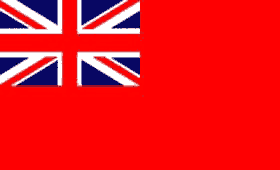Colonial Wars |
American Wars |
Link To This Page — Contact Us —
The Battle of Stono Ferry
June 20, 1779 at Near present day Rantowles, South Carolina
 |
|||||||||||||||||||
|
The Battle of Stono Ferry was a poorly planned and badly conducted military operation. It took place on June 20, 1779, in South Carolina during the British retreat from an abortive raid on Charleston.
After the American defeat at the Battle of Briar Creek, Gen. Benjamin Lincoln again assembled a force to force the British out of Augusta. The British, under Gen. Augustine Prevost, marched from Savannah towards Charleston SC only to find the town defended by Gen. William Moultie. Moultrie heard of the British advance and hastily threw defensive works between the Ashley and Cooper rivers above the city.
On May 12, upon learning of the defenses, Prevost withdrew the British forces. They withdrew to James Island and then to Stono Ferry, which was south of Charleston.
John Maitland was in charge of the large rear guard left by General Augustine Prevost upon his withdrawal to Savannah. A bridgehead was established on the north side of an area now known as New Cut Church Flats; this was meant to cover Stono Ferry. Three strong redoubts were built, circled by an abatis and manned by Highlanders and Hessians. It was here that American Major General Benjamin Lincoln chose to lead his main attack. William Moultrie led a smaller secondary effort to the east against a small group of British soldiers on Johns Island.
Lincoln deployed his troops after a night march of eight miles from the Ashley Ferry, located in the present village of Drayton Hall. Immediately upon their arrival at dawn, they began struggling through thick woods. The Americans advanced in two wings; General Jethro Sumner led his Carolina militia on the right, carrying two guns, while their right flank was covered by a company of light infantry, commanded by the Marquis de Malmady. Continental Army troops, under General Isaac Huger, made up the left wing; they carried four guns into battle. With Huger was a group of light infantry under John Henderson, and it was these troops who, shortly before sunrise, made first contact with the enemy. The rear guard consisted of 900 British, Hessians and Tories. Moultrie attacked mainly with militia who were no match for the defenders. In spite of this victory, Prevost withdrew his troops and abandoned South Carolina.
At 150 dead and a comparable number missing, Patriot losses had been heavy; among the dead was Andrew Jackson's brother Hugh, felled by heat and exhaustion. Most of the "missing" were deserters; the British claimed no prisoners from the battle. Huger was severely wounded. For their part, the British lost 150 officers and men, but only one was reported missing.
Maitland had decided almost a week prior to the battle to withdraw from battle; however, his action was delayed by a lack of water transportation. Finally, on June 23 he began moving towards Beaufort, although with little prompting from Lincoln's attack.
